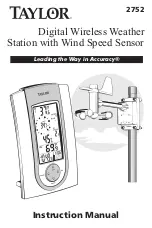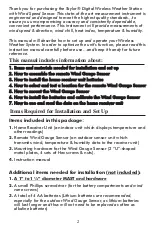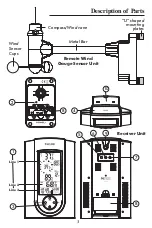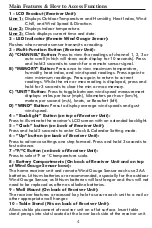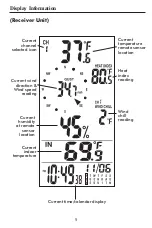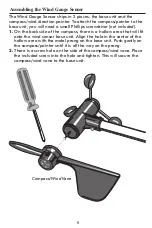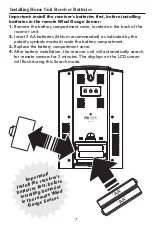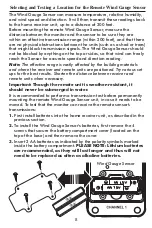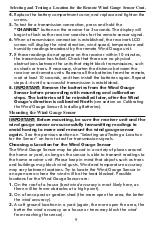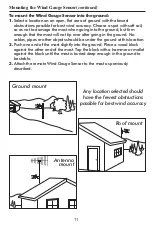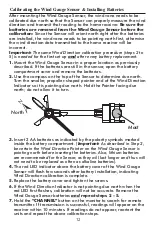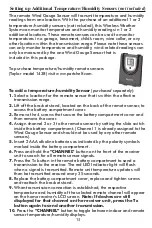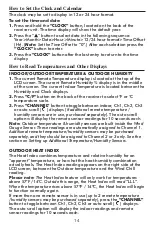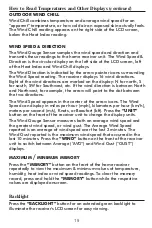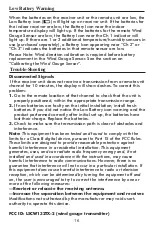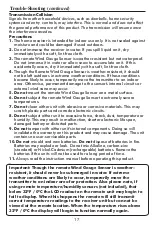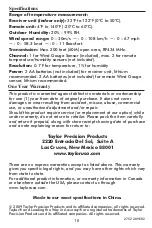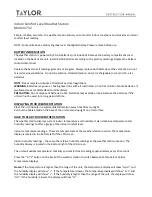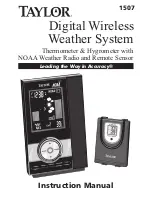
9
Selecting and Testing a Location for the Remote Wind Gauge Sensor Cont.
Mounting the Wind Gauge Sensor
4.
Replace the battery compartment cover, and replace and tighten the
screws.
5.
To test for a transmission connection, press and hold the
“CHANNEL”
button on the receiver for 3 seconds. The display will
begin to flash as the receiver searches for the remote sensor signal.
6.
When a transmission connection is established, the receiver's LCD
screen will display the wind direction, wind speed, temperature and
humidity readings broadcast by the remote Wind Gauge unit.
7.
If these readings do not appear on the receiver within 10 minutes,
the transmission has failed. Check that there are no physical
obstructions between the units that might block transmissions, such
as sheds or trees. If necessary, shorten the distance between the
receiver and remote units. Remove all the batteries from the remote,
wait at least 10 seconds, and then install the batteries again. Repeat
steps 4-6 until a successful transmission is established.
8.
IMPORTANT:
Remove the batteries from the Wind Gauge
Sensor before proceeding with mounting and calibration
steps. The batteries will be reinstalled later, after the Wind
Gauge's direction is calibrated North
(
see section on Calibrating
the Wind Gauge Sensor & Installing Batteries
).
IMPORTANT:
Before mounting, be sure the receiver unit and the
wind gauge sensor are successfully transmitting readings to
avoid having to move and remount the wind gauge sensor
again.
See the previous section on
“Selecting and Testing a Location
for the Sensor”
on how to test for transmission signals.
Choosing a Location for the Wind Gauge Sensor
The Wind Gauge Sensor may be placed in a variety of places around
the home or yard, as long as the sensor is able to transmit readings to
the home receiver unit. Please keep in mind that objects such as trees
and buildings may block wind gusts. Wind and temperature accuracy
may vary between locations. Try to locate the Wind Gauge Sensor in
an open area where the wind will be the least blocked. Possible
locations for the Wind Gauge Sensor are:
1.
On the roof of a house (
best wind accuracy is most likely here, as
there will be fewer obstacles at a high point
).
2.
On a fence post or garden shed (
the more open the area, the better
the wind accuracy
).
3.
A soft ground location in a yard (
again, the more open the area, the
better the wind accuracy, as a house or trees may block the wind
from reaching the sensor
).

